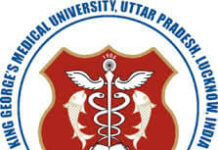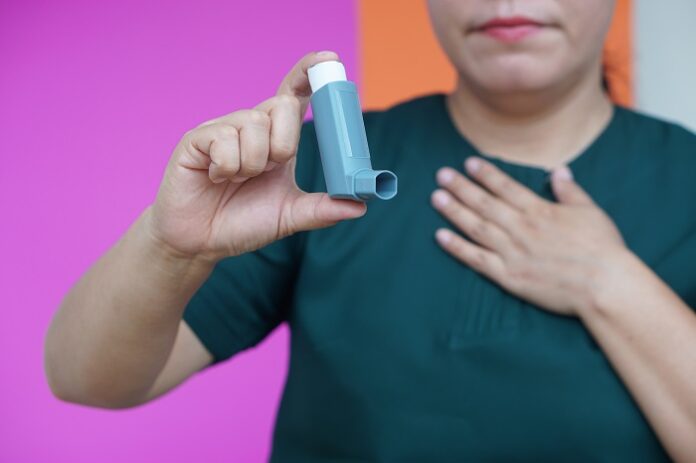Abstract
Thunderstorm asthma is a form of allergic asthma occurring after sudden thunderstorms. This can happen suddenly to people in spring or summer when there are a lot of allergens in the air and the weather is hot, dry, windy, and stormy. This can affect a large number of inhabitants in a locality and hence local medical services may find it difficult to meet the exigency. This article reviews the important features and clinical significance of thunderstorm asthma.
Keywords: Asthma, thunderstorm, pauci-micronic, pollen grain
Introduction
Thunderstorm asthma is due to a potent mix of pollen and weather conditions that can trigger severe asthma symptoms in a large number of people over a short period of time. When certain types of thunderstorms react with high grass pollen conditions in the surrounding rural environment, it can result in a fine mixture of pollen fragments in which thunderstorm winds blow the toxic pollen mixture on to populated areas and a large number of people experience sudden breathing difficulties.
Mechanism
Thunderstorm clouds include upward air currents (updrafts) and downward air currents (downdrafts). This contributes to the development of negatively charged particles at the bottom of clouds. When lightning occur these negatively charged particles are attracted to positively charged objects on the ground.
Pollen grains from grasses get swept up in the wind and carried for long distances. There was a 4-fold increase in closed pollen grains and a 7-fold increase in ruptured pollen grains during thunderstorms. These findings support the potential role of either grass pollen grains or pauci-micronic starch particles in thunderstorm asthma. These latter particles are released from grass pollen grains when they rupture and are small enough to be inhaled into the lungs.
The role of airborne fungi in thunderstorm asthma is also evaluated. A detailed environmental study during the June 1994 thunderstorm detected Cladosporium and Alternaria fungal spores [1]. A British study has identified increased odds of asthma admissions with elevated levels of airborne fungi such as Cladosporium and broken Alternaria species.
Epidemiology
Thunderstorm asthma events are uncommon, but generally occur between October and December. Most of the events recorded in Australia have happened in Victoria, particularly in Melbourne, which is thought to be due to the high concentration of ryegrass in the state. A report from Australia showed a significant increase in patients attending EDs for bronchospasm-related symptoms, in relation to two thunderstorms in two different years in Melbourne (154 and 277 for thunderstorms compared with a daily average of 26.2 patients) [2]. In the UK thunderstorms mainly affect the South Eastern and East Midlands regions of England during the summer. A report from Canada identified that acute asthma accounted for 5 and 17% of ED visits on thunderstorm asthma days, compared with just 2% on a non-thunderstorm asthma day. It is also reported in Italy and the United States.
Hospitals in Delhi have seen an increase in patients reporting respiratory illnesses from October to December. This is following the crop season in the neighboring agricultural states and is accompanied by the widespread use of firecrackers in the festive season [3]. For the last few years, this season is declared a health emergency due to a large number of residents attending the emergency departments. At present this is attributed to pollution; however, similarities can be drawn between these episodes and thunderstorm asthma.
1 Internal Medicine Trainee, Dept. of Medicine, NHS Trust, UK
2 Professor & Senior Consultant, Baby Memorial Hospital, Calicut, India
Corresponding Author: Dr. Ravindran Chetambath, Professor & Senior Consultant, Baby Memorial Hospital, Calicut, India.
Email: crcalicut@gmail.com
Risk Factors
Thunderstorm asthma develops in people with asthma whose symptoms get worse in springtime, and are allergic to grass pollen, or get hay fever in springtime and are not known to have asthma. For those with chronic or seasonal asthma or hay fever, the symptoms of thunderstorm asthma pose a serious and potentially fatal threat. This makes it vital to not only make patients aware of potential dangers but also educate them on methods of prevention during the onset of a season. When a large number of people get affected in locality health services have been seriously affected. During the June 1994 episode 4, EDs experienced exhaustion of asthma-related supplies including nebulizer face masks, steroid tablets, B2 agonist inhalers, and B2 agonist nebulizer solution. During the same event, half of all the regional health authorities in England observed a 6-fold increase in asthma attendance in EDs and reported difficulty in ED service provision.
Additional Risk Factors
Thunderstorm asthma affects those who have poorly controlled asthma symptoms as assessed by a standard asthma questionnaire, low FEV1 on spirometry or low PEF, and higher levels of antibody to grass pollen/molds. (Specific IgE), higher levels of eosinophils in the blood or higher levels of exhaled nitric oxide (FeNO).
Clinical Features
Patients with hay fever due to grass pollen, suddenly develop difficulty in breathing. Other symptoms are chest tightness and wheezing. A large number of people in a locality get the attack. It may coincide with a sudden change in environmental conditions. Thousands of people develop, almost simultaneously, breathing difficulties, during stormy wind conditions. Most of them are allergic to grass pollens. Few are asthmatic, but the majorities have only allergic nasal symptoms. Clinical features are typical of asthma.
Diagnosis
The first step is to establish an allergy to grass pollen before the season with allergy testing. Either use in vitro test or a skin prick test. When symptomatic, establish reversible obstruction by spirometry or use peak flow variability to diagnose asthma.
Management
Use a reliever drug as and when you suspect bronchospasm. Use controller medication during the whole season. Leukotriene receptor antagonists (LTRA) and antihistamines are also useful.
Prevention
The most important action is to remain indoors if you have a local forecast of thunderstorms or high levels of grass pollen in the environment. Regular updation on asthma action plans, for high pollen seasons is needed. Keep updated on daily thunderstorm asthma forecasts in a locality. Those who are at risk should stay indoors with windows and doors closed while the storm front passes (if possible). Always consider using asthma reliever inhalers when appropriate.
Conclusion
Thunderstorm asthma can happen suddenly to people in spring or summer when there are a lot of allergens in the air and the weather is hot, dry, windy, and stormy. This may negatively impact the health care services in regional hospitals. Predicting thunderstorms and the levels of allergens in the ambient air are important and the inhabitants should follow the instructions to avoid the development of asthma.
References
- U Allitt. Airborne fungal spores and the thunderstorm of 24 June 1994. Aerobiologia 2000; 16(3): 397-440.
- Thien F, Beggs PJ, Csutoros D, Darvall J, Hew M, Davies JM, Bardin PG, Bannister T, Barnes S, Bellomo R, Byrne T, et al. The Melbourne epidemic thunderstorm asthma event 2016: an investigation of environmental triggers, effect on health services, and patient risk factors. Lancet Planet Health. 2018 Jun;2(6):e255-e263. DOI: 10.1016/S2542-5196(18)30120-7. PMID: 29880157.
- Chetambath R, Kumar J. Air pollution in Delhi and health emergency. The Indian Practitioner 2019; 72(11): 8-9.
- Venables KM, Allitt U, Collier CG, Emberlin J, Greig JB, Hardaker PJ, Highham JH, Laing-Morton T, Maynard RL, Murray V, Strachan D, Tee RD. Thunderstorm-related asthma–the epidemic of 24/25 June 1994. Clin Exp Allergy. 1997 Jul;27(7):725-36. PMID: 9249264.























